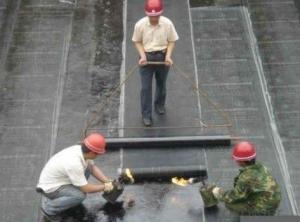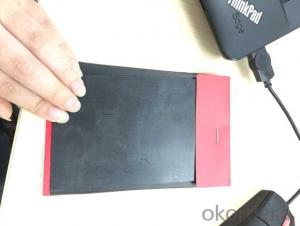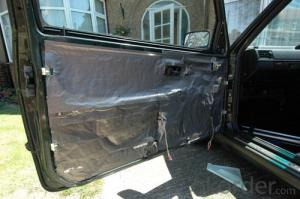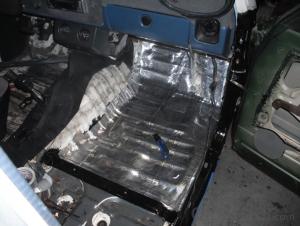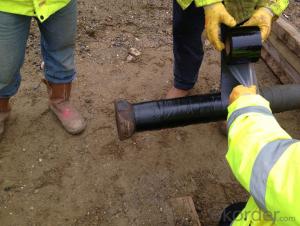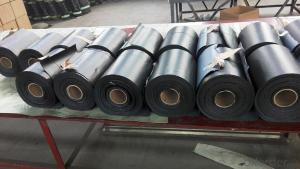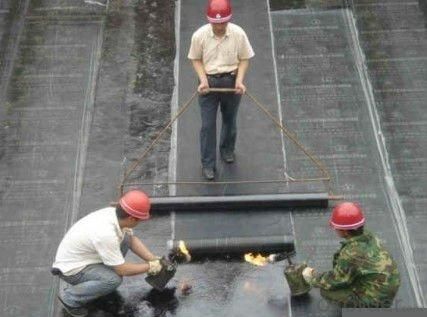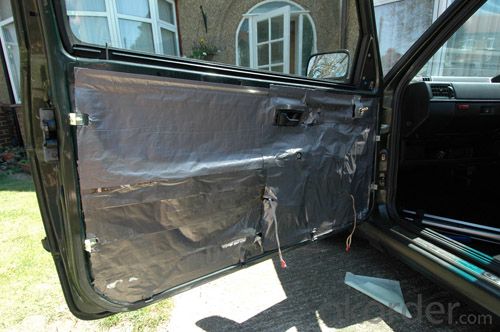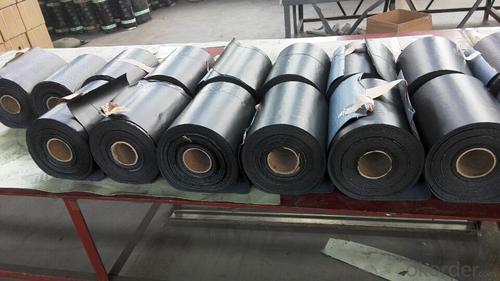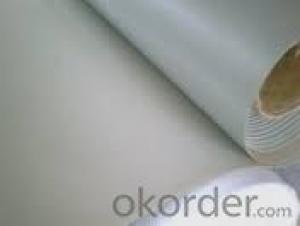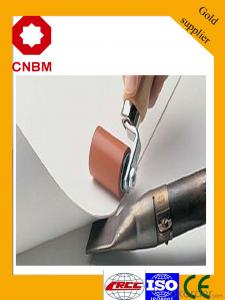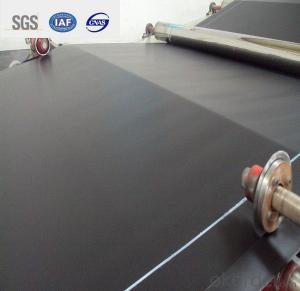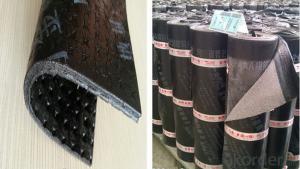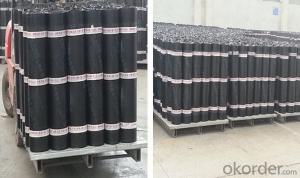SBS Modified Bitumen Waterproof Membrane 3 MM
- Loading Port:
- Tianjin
- Payment Terms:
- TT OR LC
- Min Order Qty:
- 5000 m²
- Supply Capability:
- 100000 m²/month
OKorder Service Pledge
OKorder Financial Service
You Might Also Like
Quick DetailsType:
Waterproof Membrane, Waterproof membrane Place of Origin: China (Mainland)
Surface film: PE, SAND, SCHIST,aluminum Thickness: 2.0mm~5.0mm Length: 10.0m
Width: 1.0m Usage: waterproofing for roof, understand,etc
Packaging & DeliveryPackaging Details: 10 sq.m./roll export package or as requirment
Delivery Detail: 15 days after receipt of deposit.
Specifications3mm SBS modified bitumen waterproof membrane
1) 2--5mm
2) Base:PY/G
3) Surface:PE / S / M / Al
No crack
a Only applicable to single mechanical fixed membrane construction way
B Only applicable to mineral surface bitumen waterproof membrane
C Only applicable to hot melt construction of membrane
Features
Good ability of anti-aging, anti-alkali, resistant to high temperature. High tensile strength and enlongation, which adapts to the contraction or crack of the base.
Application:
1. Make sure the base surface smooth, clean and dry(Moisture<9%), then paint the delicated agent on the base surface. Start application till it is dry.
2. Application Method:
Heating the bottom surface of membrane and the roof deck surface by flam spray gun or other suitable appliances till the asphalt start to melt(not flowing), then spread. Using roller to compact the membrane so that it can firmly adhere to the base surface. The overlap on the long side should be 100mm and the short side should be 150mm.
3. After application, a careful inspection is required. Make sure there is no air bubble, no fold, no falling away etc to guarantee the waterproof life.
Package
the membrane is launched into the market in rolls 1m wide and 10m long.
Storage Conditions and Service life
Rolls must be vertically stored in roofed-over spaces. If the rolls have to be stored outdoors for a long period of time, then they must be covered with a protective layer in order to protect them against the sunlight. If the rolls are to be stowed without pallets, they they are not stacked one on top of another. In palletised stowage, two rows may be stacked one on top of the other.
Attentions for Construction
·Construction shall not be carried out in rain, snow or over 5 degree wind weather;
There shall be sufficient safety protective facilities in construction site, place firefighting devices according to stipulations.
Installation Sketch point
Clean the substrate using broom or high pressure dusty cleaner.
Apply primer
Heat the membrane bottom using a high temperature flame gun.
Push forward while the primer and membrane oil melted
Use a roller to push hard the membrane surface to ensure it stick firmly
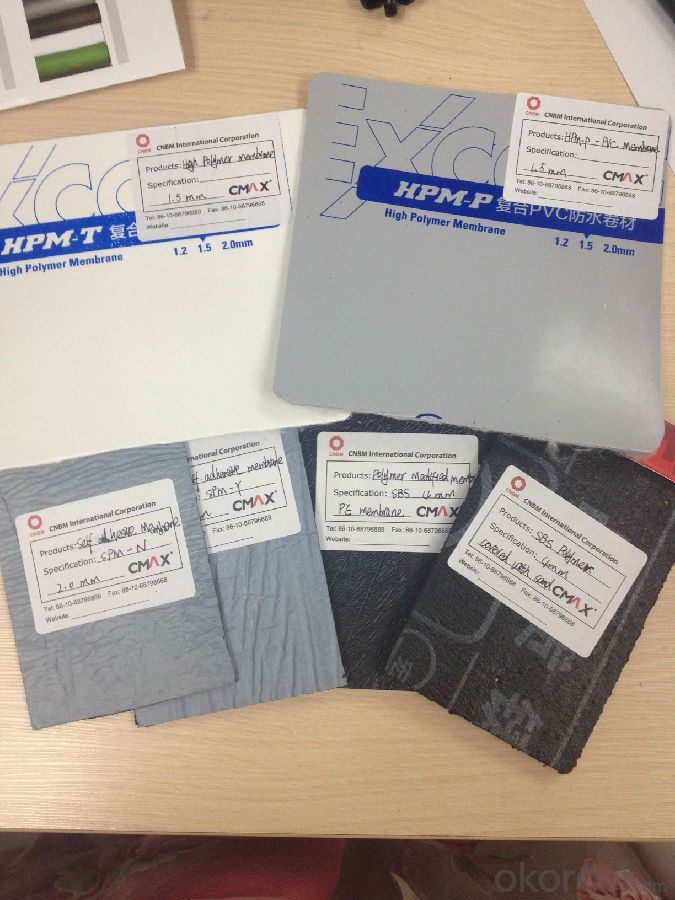
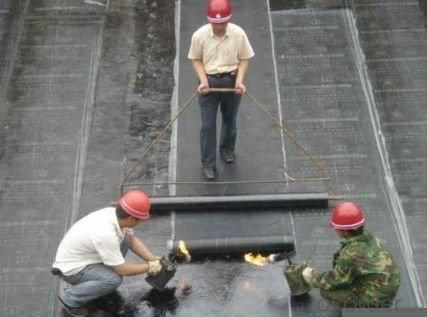
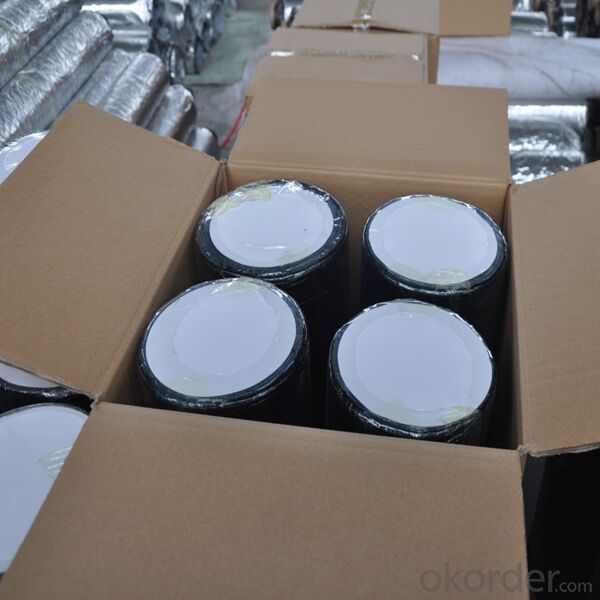
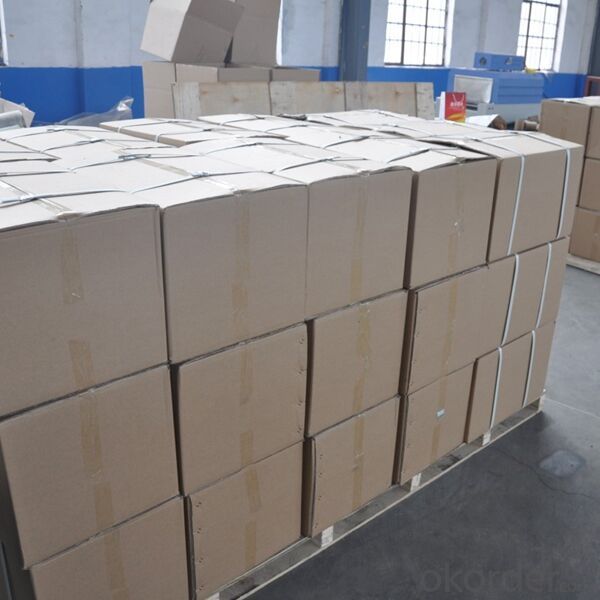
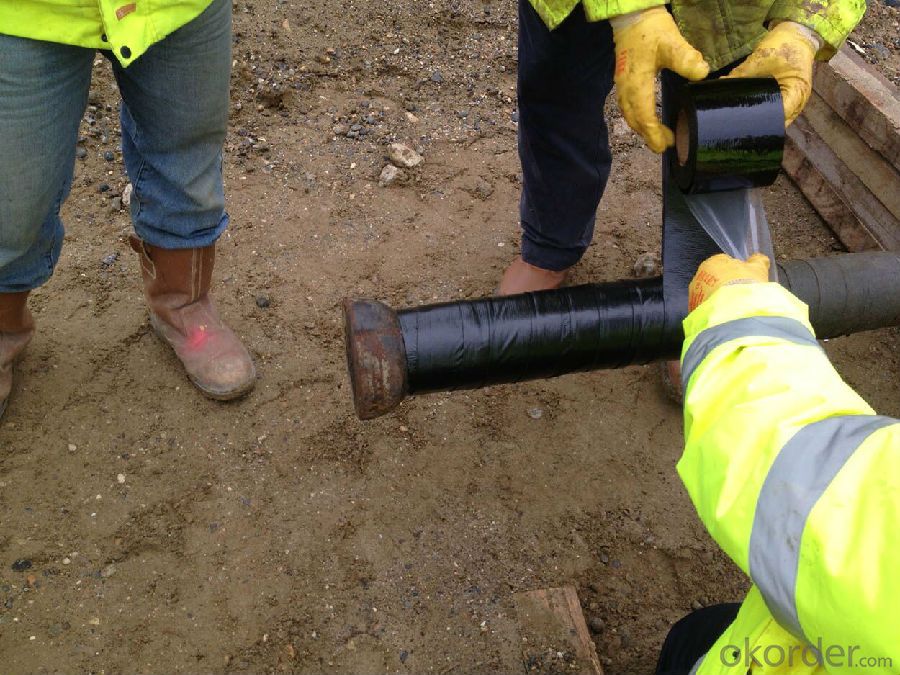
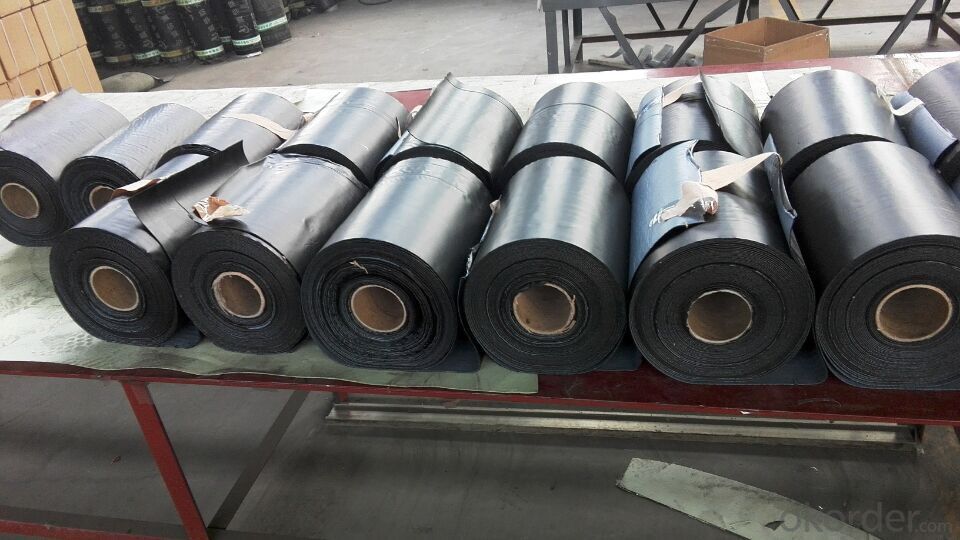
- Q: Can a waterproofing membrane be used for bridges or viaducts?
- Yes, a waterproofing membrane can be used for bridges or viaducts. Waterproofing membranes are commonly used in infrastructure projects to protect the structural elements of bridges and viaducts from water infiltration and damage. These membranes act as a barrier, preventing water from seeping into the concrete or steel components, which can cause deterioration and structural issues over time. By using a waterproofing membrane, the lifespan and durability of bridges and viaducts can be significantly increased.
- Q: Can a waterproofing membrane be applied on both horizontal and vertical surfaces?
- Waterproofing membranes can be utilized on surfaces that are both horizontal and vertical. These membranes are designed to form a barrier that prevents water from penetrating and causing harm to said surfaces. They find common use in various areas such as roofs, basements, bathrooms, and swimming pools. Whether it be a floor or a wall, the waterproofing membrane can be applied to safeguard against water infiltration. The application process may differ depending on the specific surface, but there are membranes readily available that can be easily applied to both horizontal and vertical surfaces. To guarantee proper installation and effectiveness of the waterproofing membrane, it is vital to adhere to the manufacturer's instructions and seek guidance from professionals.
- Q: Can a waterproofing membrane be used on plastic surfaces?
- Indeed, plastic surfaces can indeed benefit from the use of a waterproofing membrane. These membranes have been specially designed to create a protective barrier that hinders the penetration of water, and they are capable of adhering to various surfaces, including plastic. To ensure a successful application, the most important aspect is properly preparing the surface. The plastic surface should be thoroughly cleaned, dried, and devoid of any dirt, dust, or oils that could impede the membrane's ability to adhere. It is also crucial to select a waterproofing membrane that is compatible with plastic surfaces and possesses the flexibility and expansiveness necessary to prevent cracking or peeling. By adhering to the manufacturer's instructions and employing an appropriate product, a waterproofing membrane can effectively seal and safeguard plastic surfaces against water damage.
- Q: Are waterproofing membranes resistant to freeze-thaw cycles?
- Yes, waterproofing membranes are designed to be resistant to freeze-thaw cycles. They are specifically manufactured to withstand the expansion and contraction caused by freezing and thawing without compromising their integrity or performance. This resistance ensures that the membranes remain effective in preventing water infiltration and maintaining the durability of the structure they are applied to.
- Q: Are there any specific installation requirements for waterproofing membranes?
- Waterproofing membranes have specific installation requirements that vary depending on the type of membrane. However, there are some general guidelines that apply to most installations. To begin, it is crucial to adequately prepare the surface where the membrane will be applied. This involves cleaning the surface, removing any loose debris or previous coatings, and ensuring it is smooth and free from irregularities. Proper surface preparation allows for better adhesion between the membrane and the surface. Following that, the membrane should be applied in accordance with the manufacturer's instructions. This typically involves using a suitable adhesive or bonding agent to attach the membrane to the surface. It is important to adhere to the recommended application rate and ensure a uniform application without air bubbles or wrinkles. In addition to correct application, special attention should be given to the seams and joints of the membrane. These areas are particularly vulnerable to water penetration, so they need to be carefully sealed using an appropriate sealant or tape. This guarantees a watertight seal and prevents any water from seeping through the seams. Lastly, it is essential to safeguard the installed membrane from damage during and after installation. This can be achieved by covering the membrane with a protective layer, such as geotextile fabric or a layer of soil, to prevent punctures or tears. Additionally, any construction or landscaping work following the installation should be done cautiously to avoid harming the membrane. Ultimately, the specific installation requirements for waterproofing membranes depend on the type of membrane and the project's specific conditions. It is always advisable to consult the manufacturer's instructions and guidelines to ensure proper installation and long-lasting waterproofing performance.
- Q: Can a waterproofing membrane be applied on top of existing roofing systems?
- The application of a waterproofing membrane on existing roofing systems is a common practice in the roofing industry. This method enhances the waterproofing capabilities of the roof by preventing water infiltration. The membrane, which can be made of materials like asphalt, rubber, or synthetic materials, is installed to create a layer that stops water from seeping through. Before applying the waterproofing membrane, it is crucial to evaluate the condition of the existing roof. Any damage or defects should be fixed to provide a solid foundation for the membrane. Additionally, the surface must be thoroughly cleaned and prepared to ensure proper adhesion of the membrane. Once the surface is prepared, the waterproofing membrane can be applied using different methods such as hot-mopping, torching, or adhesive application. Multiple layers of the membrane are typically installed to offer extra protection against water penetration. The application of a waterproofing membrane on top of an existing roofing system offers several advantages. It extends the lifespan of the roof by preventing water damage and leaks. Moreover, it enhances the energy efficiency of the building by reducing heat transfer and air leakage. Additionally, it improves the overall waterproofing capabilities of the roof, safeguarding the underlying structure from moisture-related problems. To determine the most suitable waterproofing membrane and installation method for your specific roofing system, it is essential to consult with a professional roofing contractor. They will evaluate the condition of the existing roof and recommend the best approach to ensure a successful application of the waterproofing membrane.
- Q: Can a waterproofing membrane be used on vinyl surfaces?
- Yes, a waterproofing membrane can be used on vinyl surfaces. Vinyl surfaces, such as vinyl flooring or vinyl siding, are commonly found in many residential and commercial buildings. Waterproofing membranes are designed to create a barrier against water and moisture, preventing them from seeping into the underlying materials. These membranes can be applied over vinyl surfaces to provide an additional layer of protection, ensuring that the vinyl remains unaffected by water damage or deterioration. It is important to select a waterproofing membrane that is compatible with vinyl surfaces and follow the manufacturer's instructions for proper application.
- Q: Can waterproofing membranes be used on outdoor decks?
- Outdoor decks can indeed benefit from the use of waterproofing membranes. These membranes are highly favored among deck owners due to their ability to effectively block moisture, thus safeguarding the underlying structure from harm. Comprised of durable materials like rubber or PVC, these membranes are specifically crafted to endure exposure to the elements. They are directly applied onto the deck surface, effectively establishing a watertight seal that serves as a protective shield against rain, snow, and other forms of moisture. Moreover, by preventing water damage, rot, and decay, waterproofing membranes contribute significantly to extending the lifespan of the deck. Consequently, incorporating waterproofing membranes into the maintenance routine of outdoor decks proves to be not only a sensible approach but also an efficient one, ensuring the deck's structural integrity and longevity are well-preserved.
- Q: Can a waterproofing membrane be applied in cold weather or during winter months?
- Yes, a waterproofing membrane can be applied in cold weather or during winter months. However, it is important to follow the manufacturer's guidelines and use products specifically designed for cold weather applications. Cold weather may affect the curing time of the membrane, so it is recommended to take necessary precautions and allow sufficient time for proper curing to ensure the effectiveness of the waterproofing.
- Q: Does a waterproofing membrane provide any soundproofing benefits?
- No, a waterproofing membrane does not provide any soundproofing benefits. Its primary function is to prevent water penetration and protect against moisture damage. Soundproofing requires specific materials and techniques designed to absorb, block, or isolate sound waves.
Send your message to us
SBS Modified Bitumen Waterproof Membrane 3 MM
- Loading Port:
- Tianjin
- Payment Terms:
- TT OR LC
- Min Order Qty:
- 5000 m²
- Supply Capability:
- 100000 m²/month
OKorder Service Pledge
OKorder Financial Service
Similar products
Hot products
Hot Searches
Related keywords
